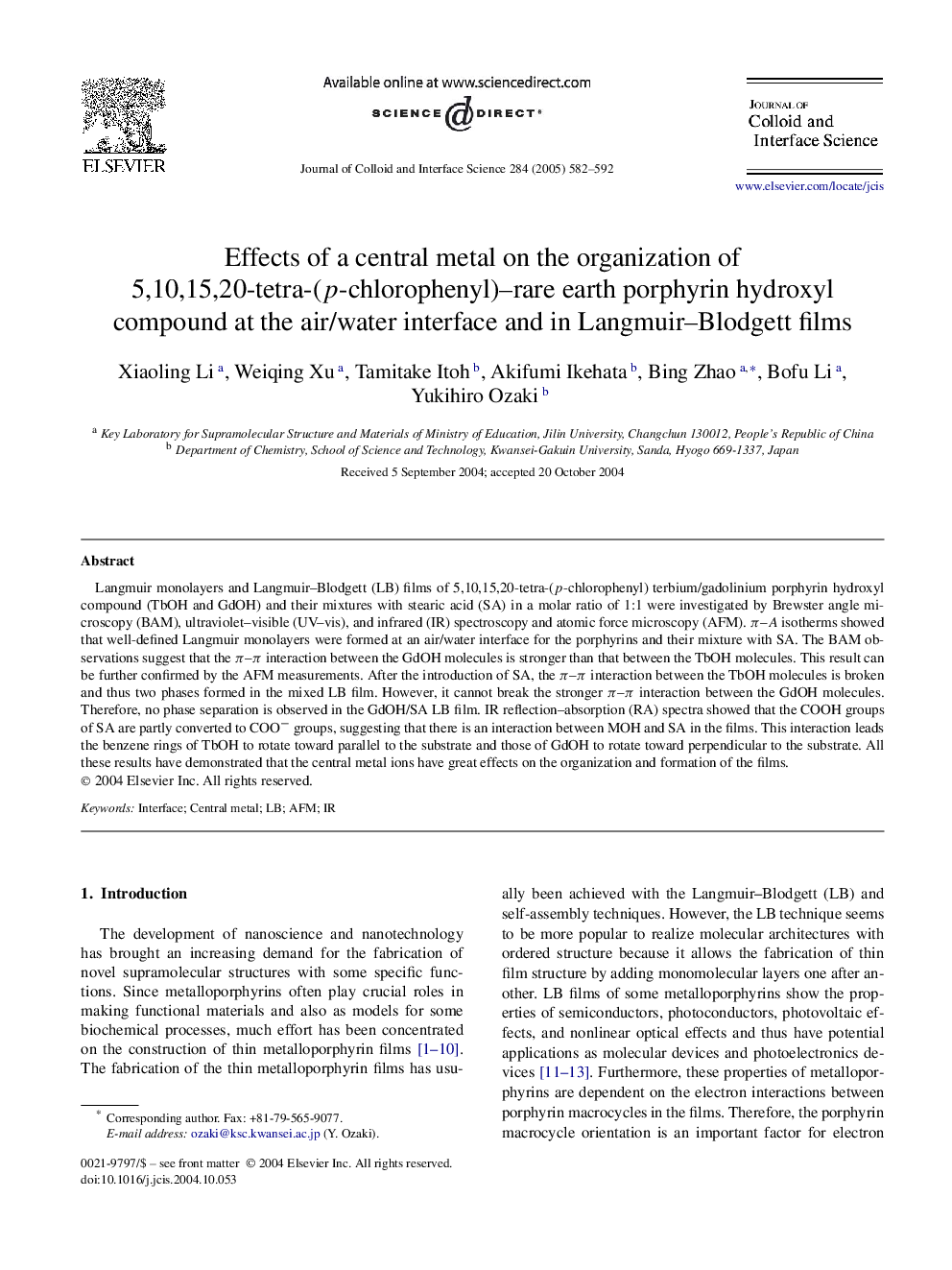| Article ID | Journal | Published Year | Pages | File Type |
|---|---|---|---|---|
| 10378238 | Journal of Colloid and Interface Science | 2005 | 11 Pages |
Abstract
Langmuir monolayers and Langmuir-Blodgett (LB) films of 5,10,15,20-tetra-(p-chlorophenyl) terbium/gadolinium porphyrin hydroxyl compound (TbOH and GdOH) and their mixtures with stearic acid (SA) in a molar ratio of 1:1 were investigated by Brewster angle microscopy (BAM), ultraviolet-visible (UV-vis), and infrared (IR) spectroscopy and atomic force microscopy (AFM). Ï-A isotherms showed that well-defined Langmuir monolayers were formed at an air/water interface for the porphyrins and their mixture with SA. The BAM observations suggest that the Ï-Ï interaction between the GdOH molecules is stronger than that between the TbOH molecules. This result can be further confirmed by the AFM measurements. After the introduction of SA, the Ï-Ï interaction between the TbOH molecules is broken and thus two phases formed in the mixed LB film. However, it cannot break the stronger Ï-Ï interaction between the GdOH molecules. Therefore, no phase separation is observed in the GdOH/SA LB film. IR reflection-absorption (RA) spectra showed that the COOH groups of SA are partly converted to COOâ groups, suggesting that there is an interaction between MOH and SA in the films. This interaction leads the benzene rings of TbOH to rotate toward parallel to the substrate and those of GdOH to rotate toward perpendicular to the substrate. All these results have demonstrated that the central metal ions have great effects on the organization and formation of the films.
Related Topics
Physical Sciences and Engineering
Chemical Engineering
Colloid and Surface Chemistry
Authors
Xiaoling Li, Weiqing Xu, Tamitake Itoh, Akifumi Ikehata, Bing Zhao, Bofu Li, Yukihiro Ozaki,
